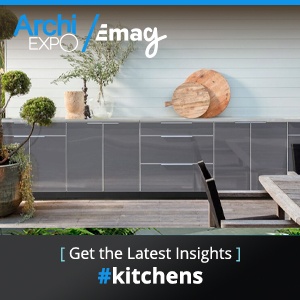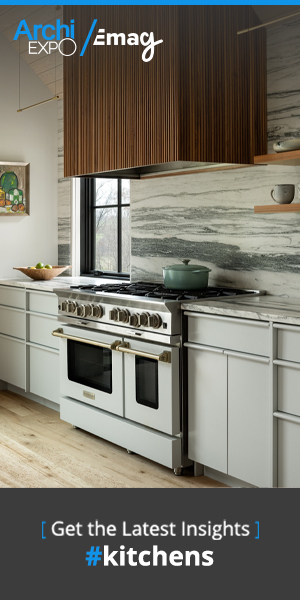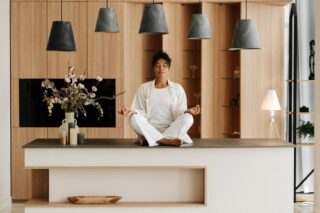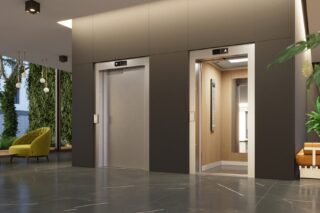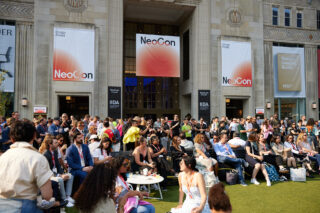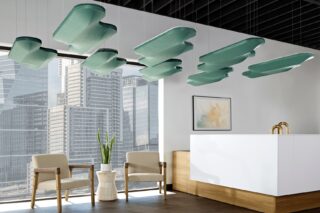The pursuit of energy efficiency in building design threatens architectural creativity, human well-being, and the glass and glazing industry. We need a balanced approach that integrates sustainability with aesthetics and occupant health.
This opinion piece was written by Dr. Doug Milburn, Chairman and Co-founder, Advanced Glazings Ltd.
In the 1970s, the world confronted its first major energy crisis, largely sparked by geopolitical tensions and the manipulation of oil markets by OPEC. North America’s response was swift and singularly focused: slash energy consumption, particularly in the way we built homes and commercial structures. The result? A generation of buildings that were energy efficient but aesthetically cold, uncomfortable, and, in many cases, unhealthy. Take for example, the Miami-Dad Country School Board South Tower – deeply brutalist with utility the primary focus of the structure’s needs.
Fast forward to 2024, and the cycle is repeating itself. Once again, building codes and regulations are fixated on energy efficiency—this time in the name of climate action—and once again, this singular focus is forcing architects and designers into a straitjacket that threatens not just our architectural creativity but entire industries, most notably the glass and glazing sector.
What we’re facing now is not just a challenge. It is an existential threat to two deeply intertwined worlds: the architectural community and the glass and glazing industry, both of which are crucial to creating vibrant, human-centered spaces that enrich lives. ASHRAE Standard 90.1 sets minimum requirements for commercial buildings to be energy-efficient designs and all-glass buildings are no longer code-compliant within that prescriptive rule.


Glass and Windows: A “Necessary Evil” to be Minimized?
Today’s commercial building codes are rife with mandates to reduce window sizes, with phrases like “20% window-to-wall ratio is sufficient” becoming all too common. In their quest to minimize energy loss, policymakers and regulators seem to have forgotten—or chosen to ignore—decades of research proving that natural light and a connection to the outdoors are essential for human health and productivity.
This puts architects in a bind. They are being forced to design within a framework that devalues the very elements that make a building inviting, engaging, and, frankly, livable. The architectural profession has long championed the integration of natural light as a critical component of design, not just for aesthetic purposes, but for its profound impact on human wellbeing. Yet, modern regulations are suffocating that vision by severely limiting the amount of glazing that can be included in new builds.
It’s as if windows—long cherished as the soul of a structure—are now considered an afterthought, a necessary evil to be minimized in the name of energy efficiency. The design constraints this imposes are not just frustrating for architects; they are stifling creativity and driving us toward a future of dull, uninviting buildings that do little to serve the needs of the people inside them.


The Health Crisis that Follows
This overzealous focus on reducing energy consumption isn’t just leading to the creation of uninspired buildings—it’s directly contributing to a health crisis. There is a growing body of evidence that shows humans thrive in environments filled with natural light. Studies show that employees working in spaces with ample daylight are more productive and report higher levels of satisfaction. Schools with larger windows and access to outdoor views have students who perform better academically. Hospitals with large windows see patients recovering faster.
And yet, the architects designing our offices, schools, and hospitals are increasingly being told to compromise these crucial features for the sake of meeting arbitrary energy metrics. The result is not just unattractive buildings—it’s environments that are actively harmful to their occupants.
An Economic Death Sentence for the Glass and Glazing Industry
While architects are grappling with these creative constraints, the glass and glazing industry is facing an even graver challenge—one that could threaten its very survival. If current trends continue, the reduction in window-to-wall ratios could contract the market for glazing products to such an extent that it triggers widespread layoffs and business closures. This is not an exaggeration. The industry, which has long been a critical part of the global supply chain for both residential and commercial construction, is at risk of being decimated.
Thousands of jobs are tied to the manufacturing, distribution, and installation of glazing products. These jobs are part of a vast and complex network that includes not just glassmakers, but architects, contractors, engineers, and construction workers. The ripple effects of a contraction in the glazing market could be devastating, impacting communities across the globe and eliminating entire segments of the construction economy.
Moreover, the radical reduction in glazing areas is likely to stifle innovation. The glass industry has made enormous strides in developing high-performance products, including energy-efficient glazing solutions like low-E coatings, triple glazing, and dynamic glass, which can significantly reduce energy loads while still allowing for large window areas. However, if regulations continue to encourage minimal window sizes, the incentive for further R&D investment will disappear, stalling future innovations that could have balanced energy efficiency with human comfort and aesthetics.

Architects: Forced into a Straitjacket of Mediocrity
For architects, the current situation feels like being trapped in a design straitjacket. The architecture profession has long sought to push the boundaries of form, function, and beauty. From modern skyscrapers that defy gravity to serene homes that blend seamlessly with nature, great architecture elevates the human experience. But the push for energy efficiency at the cost of all else is robbing architects of their ability to craft buildings that serve both environmental goals and human needs.
Many architects now find themselves having to choose between compliance with energy codes and designing buildings that inspire. As quoted in The New York Times in response to New York City’s 2019 “ban” on glass and steel buildings:
“Everyone is trying to figure out what the mayor meant,” said Adam Roberts, director of policy for the American Institute of Architects New York. “We just hope that the mayor misspoke.”
The constraints being imposed are forcing many to default to mediocrity—designs that prioritize insulation over inspiration. The tradeoff is clear: we’re saving on heating and cooling costs, but we’re sacrificing the very essence of what makes a building special.
Case Studies for the Future
In response to increasingly stringent building codes, projects like the Vaudreuil-Dorion City Hall and the Volvo Dealership showcase how careful glass and design choices can meet energy requirements while also prioritizing occupant experience and architectural aesthetics.
The Vaudreuil-Dorion City Hall in Quebec exemplifies the potential of innovative glazing solutions to create spaces that feel open and connected to the environment. Integrating Advanced Glazings’ SoleraWall translucent glass into its front façade with a 50% window-to-wall ratio, the design team leveraged Radiance daylight and thermal modeling to optimize both light transmittance and solar heat gain. This design fosters natural illumination while maintaining thermal comfort through honeycomb insulation and aerogel, achieving a high thermal resistance (R18, U.056) and a “glowing wall” effect. Transparent areas strategically placed within the glass facade preserve views to the outside, addressing both energy performance and the occupants’ need for a visual connection with nature.
Similarly, Volvo Canada has invested in a redesign for many of their showrooms using Solera light-diffusing glass, flooding the spaces with natural light. This 70% window-to-wall ratio design doesn’t just create an inviting atmosphere but aligns with Volvo’s aesthetic and functional goals. By emulating the light conditions of outdoor environments, the showroom enhances the authenticity of the viewing experience for customers. With insulation values ranging from R5 to R9 (U.20 to U.11) tailored to the dealership’s specific location, this project demonstrates that even commercial spaces can achieve energy efficiency without compromising visual appeal.
Time for a New Paradigm: Balancing Energy with Wellness and Design Freedom
It is time for the glass industry, architects, building scientists, and health practitioners to rally together. The pursuit of energy efficiency is undeniably critical, but it cannot come at the cost of creativity, economic health, or the wellbeing of building occupants. To strike a more balanced approach, we need a shift in perspective.
First, building codes must be revised to promote balanced design, recognizing the importance of natural light and views to the outdoors. Current standards, which prioritize energy reduction above all else, need to evolve. They should allow for larger glazed areas while encouraging the use of high-performance glazing technologies like low-E glass, vacuum-insulated windows, and dynamic glazing that maintain energy efficiency without sacrificing daylight.
The glass industry, in turn, must continue to innovate, developing products that meet stringent energy requirements without compromising on window size or quality. By investing in research and development, the industry can provide architects with solutions that align with both environmental targets and design principles.
Collaboration across industries is essential. Architects, glass manufacturers, building scientists, and regulators need to come together to develop building standards that account for the realities of modern living. This means advocating for design strategies that integrate energy management with the wellness of building occupants, recognizing that both factors are equally important.
Finally, public awareness must be raised. It’s crucial for building owners, developers, and tenants to understand the dangers of prioritizing energy efficiency over human wellbeing. They need to see the long-term value that comes from creating spaces filled with natural light, comfort, and thoughtful design—not just the short-term savings on energy bills.
We stand at a crossroads. If we continue down the current path, the consequences for both the architectural profession and the glass and glazing industry could be disastrous. But if we act now—if we recognize that energy management, aesthetics, and human health must all be considered in tandem—we can chart a new course. The future of our built environment, and the industries that shape it, depends on finding this balance.
![[Op-ed] The Existential Threat Facing Architecture and Glazing: How Modern Building Codes are Destroying Design, and How To Overcome It](/wp-content/uploads/sites/7/solera-glass-1000x573.jpg)


